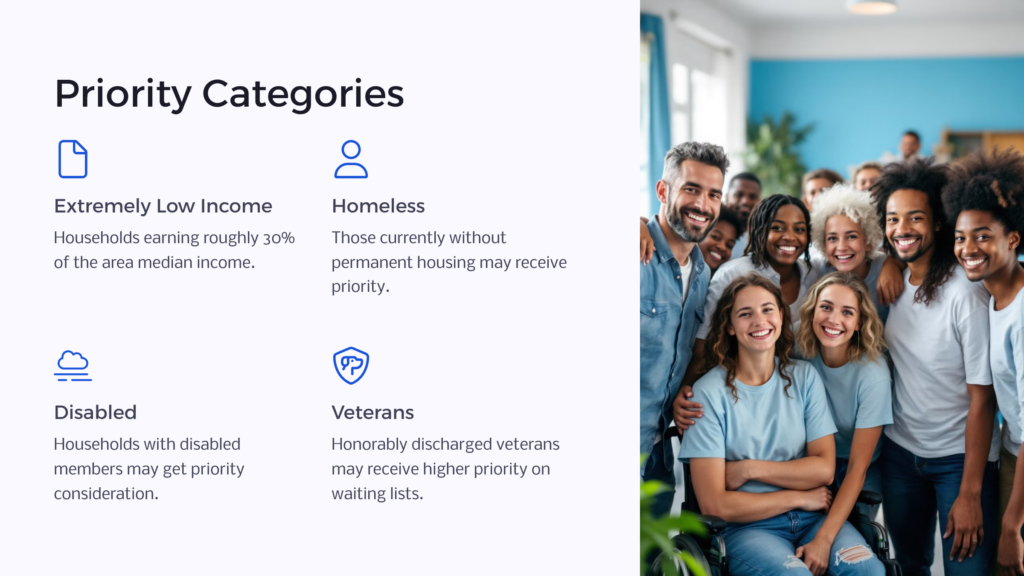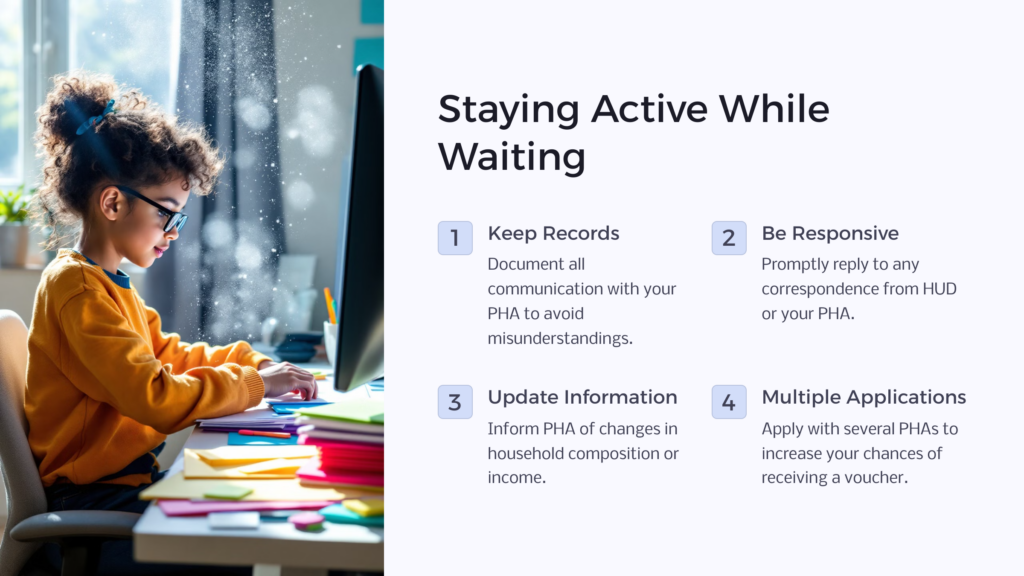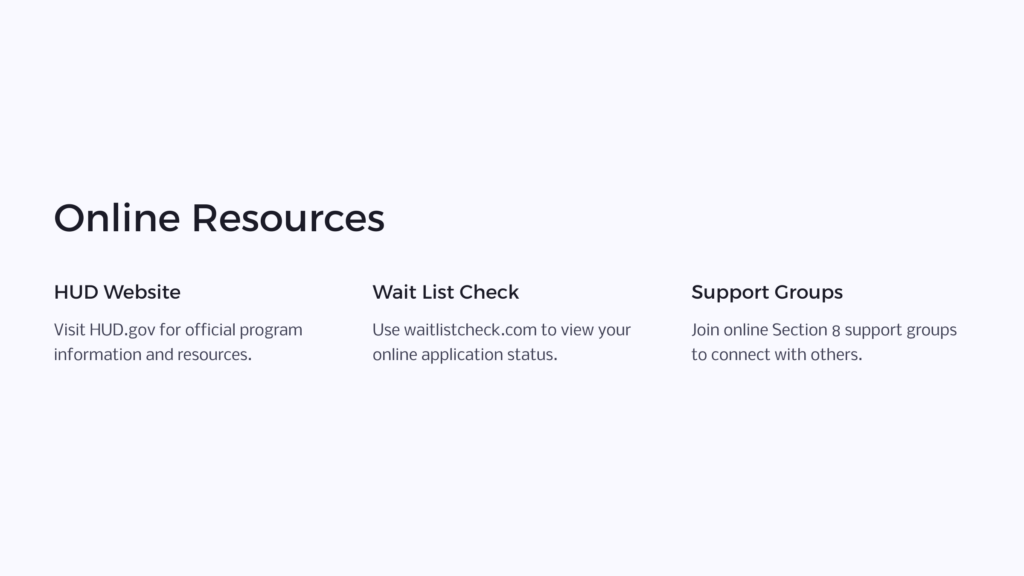The Housing Choice Voucher program helps millions of Americans find access to safe, clean, and affordable housing. But for every household that is assigned a housing voucher, countless others remain on the waiting list. Often, the wait for rental assistance can take years, though some applicants can receive special treatment and be bumped to the top of the list.
6 Ways to Get Waiting List Priority
There are several reasons why a local public housing authority may choose to move some eligible families to the top of the waitlist so they can find housing faster than others.
- Have Extremely Low Income
- Be Homeless
- Reside in a Shelter
- Have a Disability
- Be Over Age 62
- Be a Veteran
The demand for Section 8 housing assistance often largely surpasses the supply of housing units available for rent. When this happens, some eligible families may find themselves staying on a waiting list for months or even years. Before you start your application process, it’s good to be familiar with some of the reasons a PHA may choose to prioritize your application. That way, you can ask the right questions at the local level and find out more about your chances of getting placed into a housing unit more quickly.
Why is There a Waiting List?

When you apply for Section 8 housing assistance, the first step is to submit a preliminary application that outlines basic information about your household. Based on the information you submit, your PHA will determine whether you are eligible for the waiting list. If you are deemed eligible, you should receive a housing choice voucher if housing becomes available.
Unfortunately, there are currently not enough Section 8 housing units available to serve everyone who applies. Applicants are commonly placed on a waiting list until housing is available for them to rent.
The amount of time a household spends on the waitlist depends on many factors, and some household characteristics may be prioritized over others. Some applicants may remain on PHA Section 8 waiting lists for years before finally receiving their housing choice voucher.
Many volunteers have expressed frustration from having to turn so many people away. According to a recent report, “only 25% of Section 8 applicants receive the housing assistance they need.” To help find housing more quickly, many applicants choose to apply with several PHAs to be on multiple waiting lists at the same time.
How to Track Your Status
Once you qualify for Section 8 rental assistance and are placed on a waitlist, you can call your local public housing authority every 2-3 months to confirm that you’re still on the list and whether you’re moving up. You can also call your local HUD office and request the same information.
You can also check your status online. HUD offers a Wait List Check functionality that will allow you to view the status of your online application. You’ll need to visit waitlistcheck.com and be prepared to submit your name, year of birth, and Social Security number unless you’ve already set up a password.
The waiting period for a Section 8 housing choice voucher can be stressful and frustrating. Hopefully, once you know how to check on the status of your position on the waiting list, your stress level may drop. Above all, make sure you keep careful records of all correspondence from your local PHA and HUD. This way, you are protected in case a clerical error accidentally removes you from the waiting list.
Here’s some of our steps laid out.
1. Contact Your Local PHA
The key to unlocking the mystery of your Section 8 waiting list position lies with your local Public Housing Authority (PHA). Each city or county has a PHA that manages the Section 8 program. First, you’ll want to look up the contact information for your local PHA. The easiest way to do this is by visiting the official website of the U.S. Department of Housing and Urban Development (HUD) or doing a quick web search with your location’s name and “housing authority.”
2. Provide Your Information
Once you have the PHA’s contact details, take a deep breath and prepare to make that call or pay a visit. When you get in touch, be prepared to provide the PHA representative with some crucial details. They’ll need your full name, any application or reference number you might have, and possibly other identifying information.
3. Inquire About Your Status
Now comes the moment of truth. Politely and patiently ask the PHA representative about the status of your application and, most importantly, your position on the waiting list. They deal with countless inquiries daily, so being courteous can go a long way in ensuring they provide the best possible assistance. Remember that waiting lists can be long, but that patience helps.
4. Follow Up
If the PHA representative gives you a definitive answer, that’s great! But if they don’t, or if you encounter any issues or discrepancies in the information you receive, don’t be discouraged. Politely ask for clarification or inquire about the next steps in the process. Following up shows your dedication to securing housing assistance and ensures your application receives proper attention.
5. Keep Your Information Updated in PHA Records
During the waiting period, it’s essential to maintain open communication with the PHA. Inform the PHA immediately if your contact information changes—new phone number, address, or any other details. Keeping them updated will prevent any potential delays or issues with your application.
Remember, while the waiting lists can be lengthy, patience and persistence are key. Keep your information current and stay in touch with the PHA to ensure you’re ready when your opportunity for affordable housing arrives.
Who Typically Gets Priority?

Let’s take a look at examples of those who may receive higher priority on a Section 8 waitlist.
1. Having Extremely Low Income
Verifying your household’s income and your family status is one of the first steps in the application process. This is likely the most powerful eligibility requirement a housing authority will consider when reviewing your application.
The Section 8 housing choice voucher program generally serves three income categories:
- Extremely low – a household earns roughly 30% of the median income within the area
- Very low – a household earns approximately 50% of its area median income
- Low – a household earns around 80% of median income for the family’s immediate area
Most PHAs will prioritize housing options for extremely low-income families, followed by households with very low income and then those with low income. Approximately 75% of all applications a PHA accepts represent extremely low income families. If you know that your household can be classified as having extremely low income, talk to your PHA about what your income limits mean for having priority status.
2. Being Homeless
Those who are currently homeless represent a tremendously vulnerable population that many public housing authorities try to prioritize. As a result, you’ll find that it is extremely common for homeless applicants to move to the top of a Section 8 waitlist as quickly as possible. Make sure to check with your PHA about whether it prioritizes homeless applicants, along with how your PHA defines homelessness. For example, some PHAs will not classify applicants as homeless if they are currently staying with family or friends.
3. Residing in a Shelter
The goal of Section 8 is to get eligible families into safe and affordable homes of their own – off the streets and out of shelters or emergency housing. If an applicant is currently living in a shelter or emergency housing, a local public housing authority may give them priority and move them to the top of the waiting list as quickly as it can. Check with each PHA you apply with to find out how it treats this kind of applicant.
4. Having a Disability
In many situations, PHAs will give priority consideration to households with disabled members. This is especially true if those members are not being appropriately served by their current accommodations or if their current housing is aggravating a current medical condition.
For example, a family member with asthma may experience worsening symptoms if living somewhere with poor indoor air quality. You will have to submit appropriate medical documentation showing that the disability or medical condition exists and that it is being made worse by current living conditions.
5. Being Over the Age of 62
Since elderly U.S. citizens are often a vulnerable population, PHAs may prioritize households led by elderly members – defined as those aged 62 or older. One of the chief guiding philosophies of HUD is making sure that America’s elderly citizens have access to clean, safe, and affordable places to live.
6. Being a Veteran
Many veterans require assistance in finding safe and affordable housing after military life. HUD recognizes that helping U.S. veterans find appropriate housing is a huge step toward their successful transition from military to civilian life. If you or a member of your household has ever served in the U.S. armed forces, make sure to note that within your application materials, and be sure to include military documentation. To be given high priority on the waiting list, the military member must have been honorably discharged.
What to Do While You’re on the Waiting List

Even though it’s called a “waiting” list, you don’t necessarily have to be a passive applicant. There are some things you can do to still participate actively in the application process.

First, keep careful records of all written communication between you and your PHA and also notes from any phone calls. Government agencies can make mistakes. Documenting the process may end up being very important if there is a misunderstanding or clerical error.
Also, make sure to be responsive and communicate promptly. Any time you receive anything from HUD or your PHA, respond quickly so that they know you’re still enthusiastic and interested in the Section 8 program.
It’s important to update your local housing authority if there are any changes to your household or your income that could affect your place on the waiting list. For example, if you have a baby, a household member develops a disability, or you experience a change in household income, these are important facts the PHA will want to consider.
You can also apply with multiple PHAs at the same time. The more lists you’re on, the higher your chances of being awarded a housing choice voucher.
It’s a good idea to seek out Section 8 support and discussion groups online. You can find several groups on social media. Thousands of people across the country are in situations like yours, and it may help to connect with them to share ideas and experiences.
Perhaps the most important thing to do while on a Section 8 waiting list is to practice patience. You may be in for a long wait. But don’t give up. Stay in touch, ask lots of questions, and advocate for yourself and your household.
Section 8 is an Available Resource

As recently as 2018, more than five million Americans relied on Section 8 housing vouchers for some level of rental assistance. The program is comprehensive and far-reaching. For those who make it through the application process and are assigned housing, the Section 8 program can make a tremendous difference in their ability to find appropriate housing that is safe, clean, and affordable.
Being placed on a waiting list can be frustrating, but if your household falls into any of the special categories discussed here, you may be eligible for priority consideration. If you think any of these conditions apply, make sure to reach out to your local public housing authority for more information on how your case might be considered.
 Benefits.com Advisors
Benefits.com Advisors
With expertise spanning local, state, and federal benefit programs, our team is dedicated to guiding individuals towards the perfect program tailored to their unique circumstances.
Rise to the top with Peak Benefits!
Join our Peak Benefits Newsletter for the latest news, resources, and offers on all things government benefits.



















